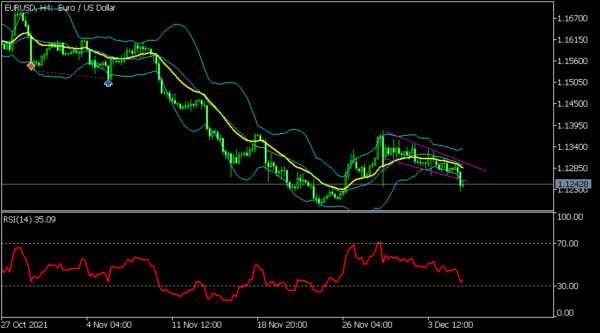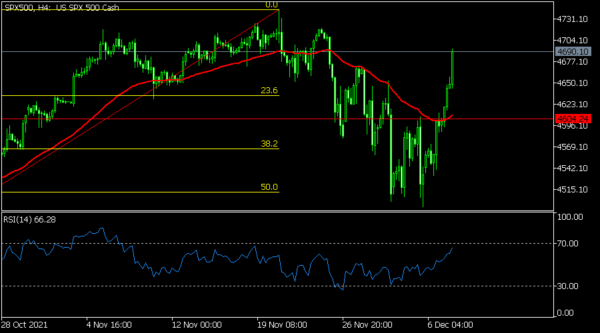US stocks jumped for the second straight day as investors reflected on new information about the Omicron variant. A report from South Africa said that the virus was moving fast but its symptoms were less severe than Delta. Therefore, investors believe that most developed countries will not order lockdowns again. Stocks also rose after GlaxoSmithKline (GSK) said that its new antibody-drug was working against the variant. Some of the biggest gainers were big technology companies like Microsoft and Apple. Intel’s stock jumped after the company revealed that it will take Mobileye public in a $15 billion deal.
The Canadian dollar jumped against the US dollar after the positive trade numbers from the country. Data by the Canadian statistics agency showed that exports and imports jumped sharply in November. This pushed the trade surplus to more than $2 billion. Further data showed that the country’s manufacturing and services PMI also rose sharply in November. Therefore, since inflation has risen and the labour market has tightened, analysts expect that the Bank of Canada will be hawkish later today. It will likely leave interest rates unchanged and hint at possible hikes in the first quarter.
The euro declined against the US dollar as Germany prepares for a leadership change. Olaf Scholz will today be sworn in to become the new chancellor of the country. It will be a notable step since Germany has only had one leader in the past 16 years. Still, since Scholz is the current finance minister, there is a likelihood that he will continue most policies championed by Angela Merkel. He becomes chancellor at a time when Germany is seeing unrest amongst citizens regarding the proposal of a mandatory vaccine. The euro will also react to a statement by Christine Lagarde today.
EURUSD
The EURUSD pair declined to a low of 1.1245, which was lower than last week’s high of 1.1380. On the four-hour chart, the pair managed to move below the lower side of the descending channel. It also moved below the 25-day moving average and to the lower side of the Bollinger Bands. The Relative Strength Index (RSI) is also approaching the oversold level. Therefore, the pair will likely resume the bullish trend as bulls target the upper side of the channel.
USDCAD
The USDCAD broke out lower on Tuesday as the market reflected on strong Canadian data. It declined to 1.2630, which was the lowest level since November. By doing so it moved below the lower side of the ascending channel. It also moved below the 25-day and 50-day moving averages while the MACD has moved below the neutral level. Therefore, the pair will likely keep falling ahead of the BOC decision.
SPX500
The S&P 500 index rose sharply on Tuesday. It is trading at $4,689, which was the highest level since November 26. It also moved slightly above the neckline of the inverted head and shoulders pattern at $4,600. The index also rose above the 25-day and 50-day moving averages while the Relative Strength Index is approaching its all-time high. Therefore, the index will likely keep rising as bulls aim for the all-time high.














